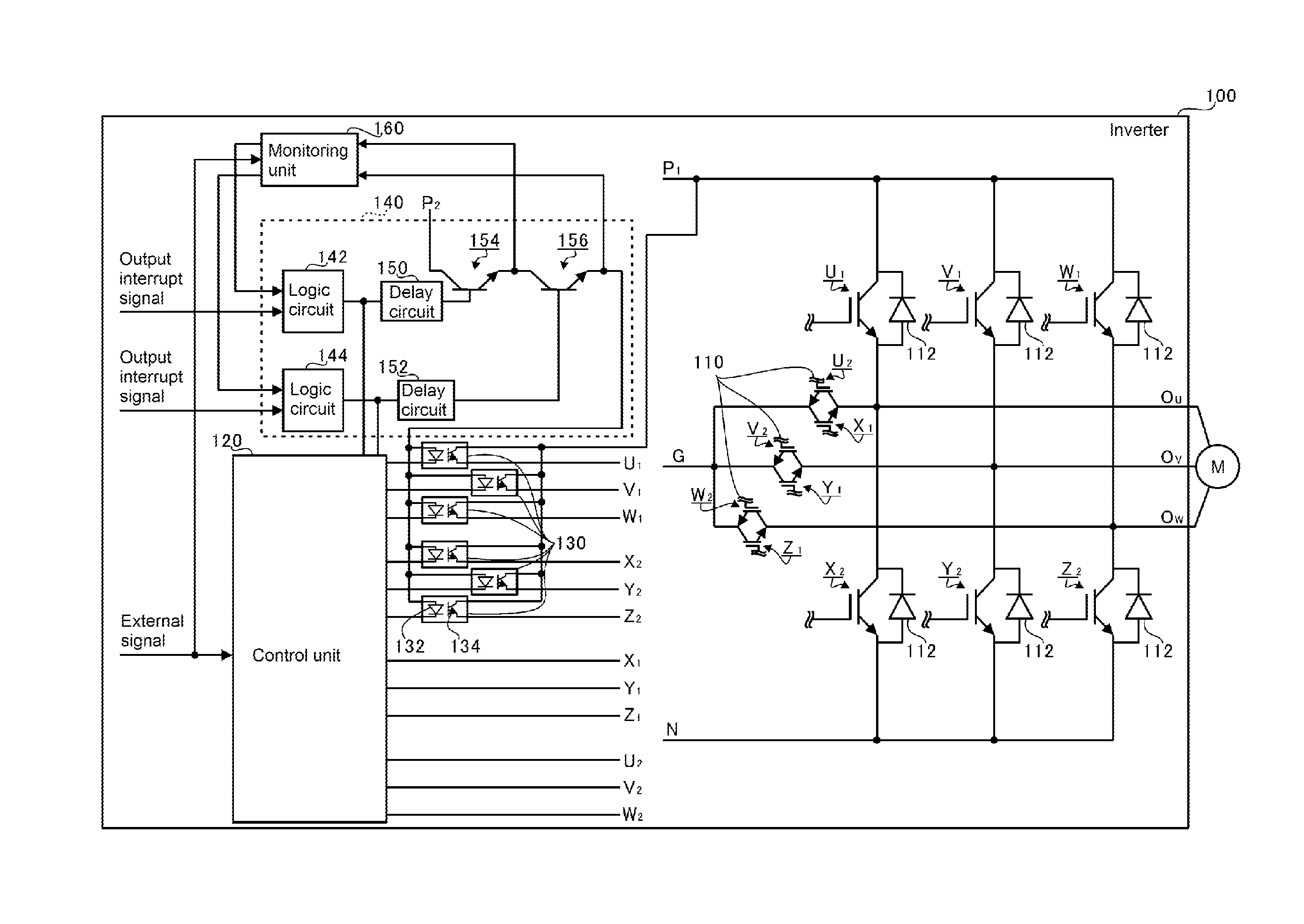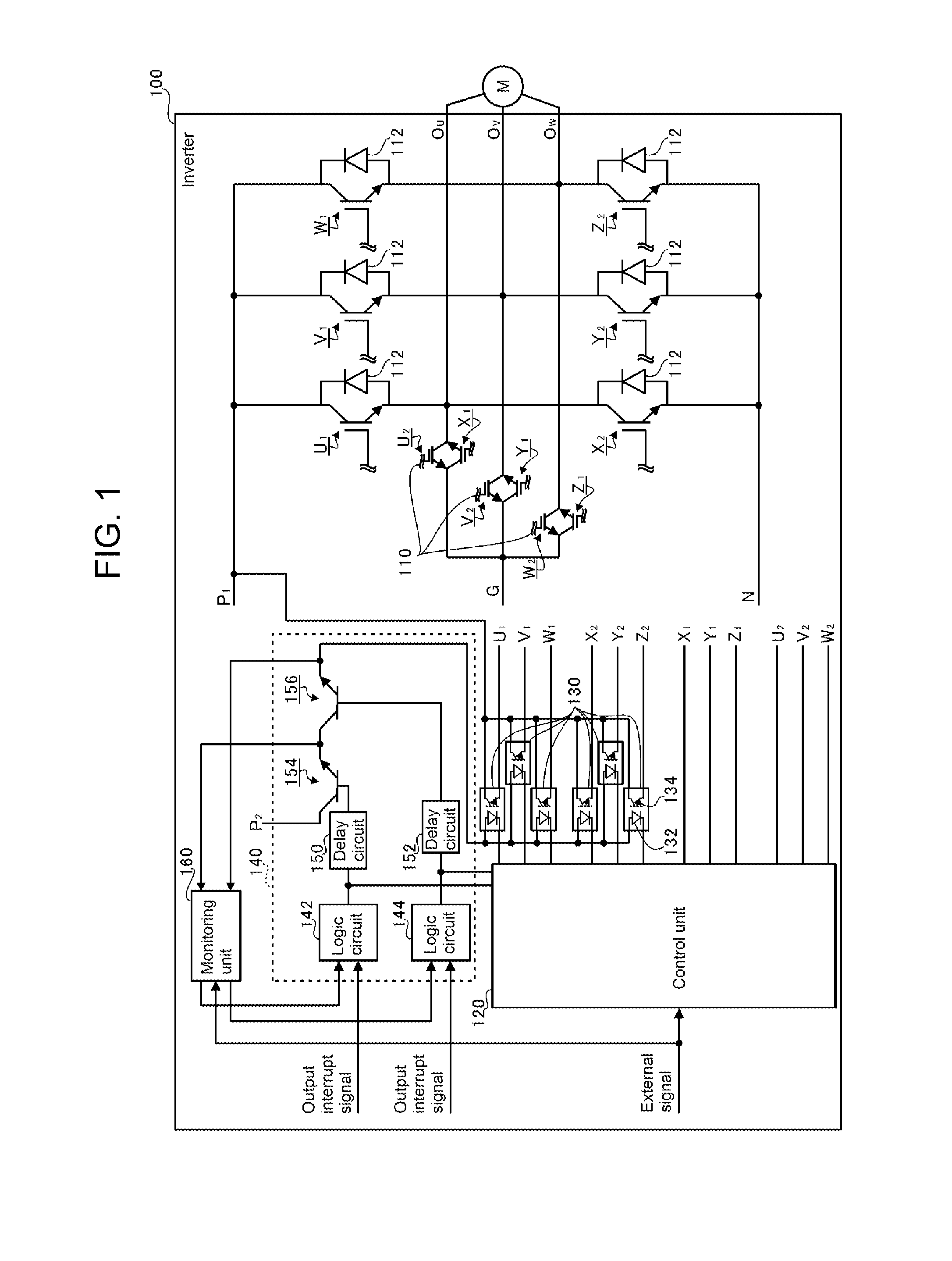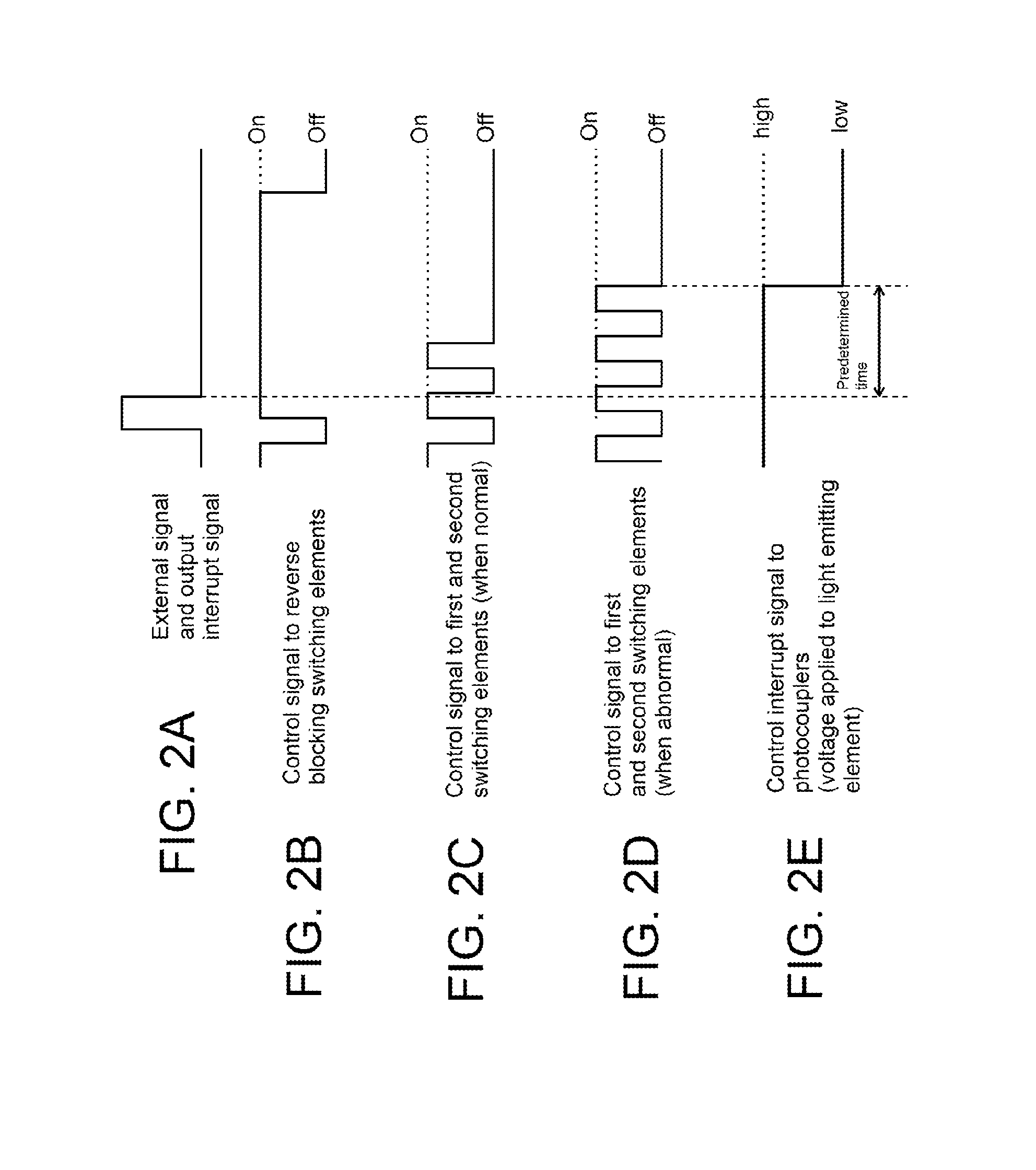Multilevel inverter
a multi-level inverter and inverter technology, applied in the direction of electronic commutation motor control, motor/generator/converter stopper, dynamo-electric converter control, etc., can solve the problems of complex circuit for stopping the functioning, inability to safely stop the functioning, increase the breakdown rate and safety, and achieve the effect of avoiding the destruction of switching elements
- Summary
- Abstract
- Description
- Claims
- Application Information
AI Technical Summary
Benefits of technology
Problems solved by technology
Method used
Image
Examples
first embodiment
Inverter 100
[0028]FIG. 1 is an illustration showing a schematic configuration of an inverter 100 in a first embodiment. The inverter 100 is configured to include direct current input terminals (a positive terminal P1, a negative terminal N, and an intermediate terminal G), switching elements (first switching elements U1, V1, and W1 and second switching elements X2, Y2, and Z2), reverse blocking switching elements 110, freewheeling diodes 112, a control unit 120, photocouplers 130, a control signal interrupt circuit 140, delay circuits 150 and 152, and a monitoring unit 160. The term “insulated gate bipolar transistor” (IGBT) is used for each switching element terminal.
[0029]The inverter 100 of this embodiment is an inverter including a plurality of direct current input terminals disposed in order of descending potential from first to nth (n is an odd number of 3 or more). Herein, a three-level inverter wherein n is 3, that is, including a first direct current input terminal (the pos...
second embodiment
Inverter 200
[0071]The first embodiment is such that the photocouplers 130 are included, and the control signal interrupt circuit 140 stops the application of voltage to the photocouplers 130. A description has been given of a case wherein, by so doing, the process of turning off the first switching elements U1, V1, and W1 and second switching elements X2, Y2, and Z2 is implemented. In a second embodiment, three-state circuits 230 and 232 are included instead of the photocouplers 130. Further, a description will be given of a case wherein a control signal interrupt circuit 240 implements the process of turning off the first switching elements U1, V1, and W1 and second switching elements X2, Y2, and Z2 via the three-state circuits 230 and 232. In the second embodiment, the same reference signs are given to configurations the same as those in the first embodiment, and a detailed description thereof is omitted.
[0072]FIG. 4 is an illustration showing a schematic configuration of an inver...
third embodiment
Inverter 300
[0089]In the first and second embodiments, descriptions have been given of the inverters 100 and 200, which are three-level inverters. In a third embodiment, a description will be given of an inverter 300, which is a five-level inverter. In the third embodiment, the same reference signs are given to configurations the same as those in the first and second embodiments, and a detailed description thereof is omitted.
[0090]FIG. 6 is a first drawing showing a schematic configuration of the inverter 300 in the third embodiment, while FIG. 7 is a second drawing showing a schematic configuration of the inverter 300 in the third embodiment. Herein, as each drawing is shown enlarged so as to facilitate understanding, one inverter 300 is shown divided between two drawings. Also, in FIGS. 6 and 7, a connection path from a control unit 320 shown in FIG. 6 to each switching element shown in FIG. 7 is shown with one portion omitted in order to facilitate understanding.
[0091]As shown in...
PUM
 Login to View More
Login to View More Abstract
Description
Claims
Application Information
 Login to View More
Login to View More - R&D
- Intellectual Property
- Life Sciences
- Materials
- Tech Scout
- Unparalleled Data Quality
- Higher Quality Content
- 60% Fewer Hallucinations
Browse by: Latest US Patents, China's latest patents, Technical Efficacy Thesaurus, Application Domain, Technology Topic, Popular Technical Reports.
© 2025 PatSnap. All rights reserved.Legal|Privacy policy|Modern Slavery Act Transparency Statement|Sitemap|About US| Contact US: help@patsnap.com



